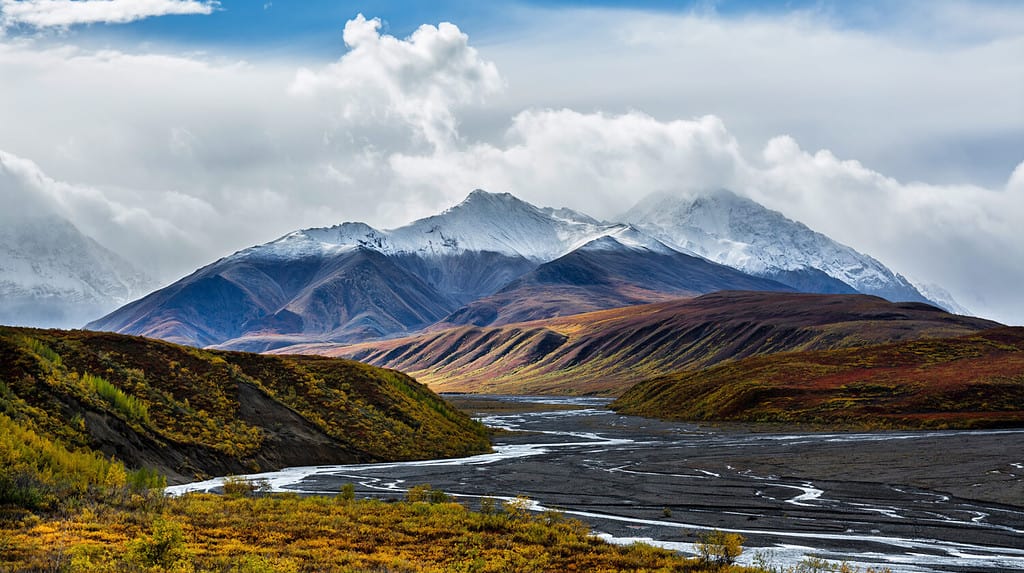University of Alaska Fairbanks (UAF) scientists have described a remarkable snapshot of what was roaming Alaska around 70 million years ago. The scientists discovered and documented the largest known single dinosaur track site, dubbed “The Coliseum” in Alaska in the Denali National Park and Preserve.
The rocky outcrop contains multiple layers of dinosaur prints preserved for millions of years. Revealing many different species via footprint, the prints are layered on each other, giving scientists insight into multiple generations of dinosaurs. The findings are described in a paper recently published in the scientific paleobiology journal, Historical Biology.
According to UAF scientists, “Based on the tracks, a variety of juvenile to adult dinosaurs frequented the area over thousands of years.”
How Big is the Site?
The tracks are located in a rocky outcrop, over 20 stories high spanning the length of one and a half football fields. Field investigations are limited because the area is so remote and vast. However, what has been revealed is stunning.
What Types of Dinosaur Tracks Were Discovered?

Inside Alaska’s Denali National Park sits the Dinosaur Coliseum, where tracks upon tracks tell a story of the past.
©Bryan Neuswanger/Shutterstock.com
Millions of years ago, where the Dinosaur Coliseum sits was a vast river network with connecting lakes and ponds. Back then, the weather would have been warmer, and the land was blanketed with lush forests and vegetation. The many preserved footprints also revealed the location was a hub for a variety of dinosaur species.

Although moose are the largest species in central Alaska today, millions of years ago, the massive Tyrannosaurs rex roamed the land.
©Orla/Shutterstock.com
Some of the species roaming the area included:
- Duck-billed dinosaurs
- Horned dinosaurs
- Raptors
- Tyrannosaurs
- Aquatic birds
In addition to dinosaur tracks, scientists also uncovered ancient plant fossils, evidence of invertebrates, mollusks, and preserved pollen.
How Were the Tracks Formed?
The tracks were cast as the ancient beasts walked across the muddy terrain. They were then filled with sediment and hardened, which preserved them for millions of years. The land was flat when dinosaurs roamed the land. As Earth’s tectonic plates collided, they formed the Alaska Range. As the mountains formed, the flat earth folded and tilted, exposing millions of years of dinosaur footprints.
About Denali National Park and Preserve

Dall’s sheep lives in the mountainous region of Denali National Park, Alaska.
©iStock.com/mlharing
Over 600,000 visitors come to Denali National Park and Preserve each year. Visitors to the park can view wildlife, and also explore the dinosaur tracks for themselves. Denali is a vast area, covering six million acres of wild land.
Wild animals such as grizzly bears, caribou, moose, wolves, and Dall’s sheep roam here. The park is home to North America’s tallest mountain, Denali, also called Mount McKinley.
The photo featured at the top of this post is © inEthos Design/Shutterstock.com
Thank you for reading! Have some feedback for us? Contact the AZ Animals editorial team.






